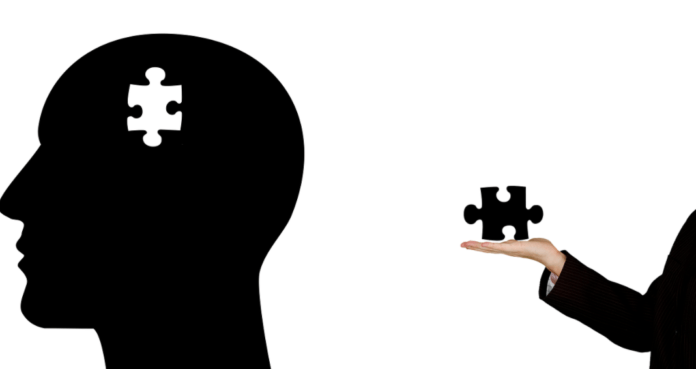Do you have trouble concentrating, sitting still, and you’re always late and disorganized? If so, and if you’ve been that way all your life, you could be battling adult ADD. We’ve all heard about attention deficit hyperactivity disorder in kids. Often, we think that it automatically goes away as one grows older. However, ADD sometimes continues into adulthood, more so when left undiagnosed and untreated.
Symptoms of Adult ADD
If left untreated, ADD can cause significant problems in an adult’s life. The most prevalent symptoms of adult ADD are impulsivity, inattention, hyperactivity, and disorganization. Up to 8% of kids have ADD. 65% of cases go undiagnosed and untreated way into adulthood. Therefore, roughly 4.4% of American adults have ADD.
Although some ADD symptoms may fade as one grows older, this remains a lifelong condition if it doesn’t get treated. Adults with ADD struggle to hold down jobs for a considerable period, getting to work on time, completing tasks assigned to them. They also tend to have relationship problems, thus higher divorce rates.
Depression and self-esteem issues are prevalent in adults with ADD because often, they feel misunderstood and cut off from everyone else. The condition is also manifest by risky behaviors such as:
- Excessive drinking
- Substance abuse
- Risky sex
- Smoking
- Gambling
- Crime
As children get older, the hyperactivity-related symptoms of ADD are likely to diminish. It’s rare to come across an adult with ADD who is disruptively hyperactive. However, they sometimes feel internally restless, which leaves them fidgety.
Impulsivity can endure until adulthood. Even so, the most standout ADD symptoms in adults are inattentiveness and disorganization. Also, adult ADD is more manifest in males than females since men tend to portray more signs of disruptive behavior than women.
An adult with ADD symptoms should see a doctor if he/she has disruptive behaviors that prevent the execution of everyday tasks. Battling ADD all your life impairs you both physically and mentally. Often, adults who have ADD don’t know about it and only go to their doctors for anxiety of depression treatment.
Unfortunately, most physicians don’t examine patients for symptoms of adult ADD. This is why recently, there have been calls for ADD diagnosis to be part of every mental evaluation for adults. ADD is more prevalent in adults than most mental health disorders; thus the significance of diagnosing and treating it.
The Risks of Untreated Adult ADD
ADD causes disruptive behavior among kids, teens, and adults. Developmentally, there are lots of negative consequences of adult ADD. Patients are at a higher risk of engaging in dangerous behaviors and habits such as excessive drinking, smoking, drug use, crime, violence, and risky sex. There’s a 50% higher chance of ADD adults being drug and alcohol abusers.
In the case of females, they are at a higher risk of unplanned pregnancies. Adults with ADD are also more likely to be involved in road rage incidents, road accidents, impulsively quit their jobs, or get fired. Divorce rates are also higher than in the general population. This clearly shows how disruptive adult ADD can be and the significance of having it diagnosed and treated.
The Upside of Adult ADD
Although most adult ADD symptoms sound like traits you would rather avoid, the condition also has a couple of positive traits you can use to your advantage. As any adult ADD test will reveal, not every adult with the condition experiences it’s disruptive symptoms. Various personal strengths can make adult ADD advantageous rather than a drawback. Some of the desirable traits of adult ADD include:
Hyperfocus
Indeed, adults with ADD may struggle to complete tasks but some of them tend to be hyper-focused. Research by Pepperdine University established that some adults with ADD focus intensely on tasks assigned to them that they can’t even notice what’s happening around them. If you’re battling adult ADD, you can leverage this trait to complete tasks without breaks in concentration.
Creativity and Inventiveness
Ever met an adult who is so creative and inventive but disorganized. If so, chances are that the person is battling adult ADD but doesn’t know about it. Living with the disorder gives you a different outlook on life and could even make you approach situations and tasks with a more thoughtful eye. Thus, some ADD patients are inventive thinkers who can develop creative, artistic, and original ideas, their disorganization notwithstanding.
Boundless Energy
There are moments when we all feel tired and unmotivated to continue our tasks. This isn’t the case with some adult ADD patients. Often, these individuals have boundless energy levels that they can channel towards tasks.
Spontaneity
If you’re battling adult ADD, you can take advantage of it by turning your impulsivity into spontaneity. Being willing to try out new ideas or break away from long-established beliefs is the bedrock of innovation. Besides, the spontaneity makes ADD adults friendlier and the life of the party.
Productivity
This is a direct result of the high energy hyperfocus that some ADD patients have. When combined, the two traits lead to productivity. Although adults with ADD often have low productivity and a general lack of interest in tasks, the right settings can stimulate hyperfocus, leading to high productivity levels.
The Adult ADD Test
ADD is generally a creepy mental disorder because you never know when it comes. The disorder is also relatively new, and thus, little is known about it. However, the adult ADD test is typically done via a comprehensive interview that involves assessing the symptoms, a patient’s history with the symptoms, the course of the symptoms, and the impairment level. Adult ADD can be severe, moderate, or mild. Besides, doctors evaluate the impairment caused by the condition in different contexts, such as family, social, work, or school.
Treatment for Adult ADD
Just like it’s the case in children, adult ADD is treated using a combination of medication and therapy. Typically, the drugs used for adults are long-acting and can either be stimulants or non-stimulants.
Stimulant medications improve concentration, focus, and attention while reducing distractibility. The non-stimulant medications help patients to calm down, more so when they experience disruptive episodes. Some patients require behavioral therapies, such as social skills training and organizational training.
Since ADD medications have potential side effects such as headaches, decreased appetite, irritability, nausea, dry mouth, and insomnia, it’s best to dose it up slowly. This way, the side effects will be minimized.
Final Words
When left undiagnosed and untreated, adult ADD is one of the most debilitating mental health disorders to live with. It causes social and emotional problems that affect an individual’s job performance, mental health, automobile safety, and family relationships. Thus, it’s essential to diagnose and treat adult ADD.
Related posts:








